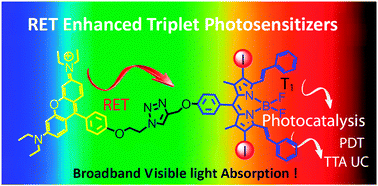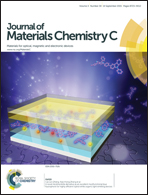Application of singlet energy transfer in triplet state formation: broadband visible light-absorbing triplet photosensitizers, molecular structure design, related photophysics and applications
Abstract
Conventional triplet photosensitizers usually contain a single visible light-harvesting chromophore, which is responsible for the dual-functionality of light-harvesting and intersystem crossing (ISC). These profiles have a few disadvantages, such as a single absorption band in the visible spectral range, low efficiency of harvesting broadband visible light (e.g., solar light), and difficulty in designing new triplet photosensitizers because the relationship between molecular structure and ISC is unclear. To address these challenges, the application of the Förster resonance energy transfer (FRET) and spin converter can lead to a new molecular structure motif for triplet photosensitizers to attain the broadband visible light-absorption, as well as disintegrated functionality of visible light-harvesting and ISC. This Review article summarizes the triplet photosensitizers showing broadband visible light absorption, including the molecular design rationales, the photophysical processes involved in these photosensitizers, such as the FRET, ISC, and the photo-induced electron transfer (PET), studied with nanosecond and femtosecond transient absorption spectroscopies. The application of triplet photosensitizers in photoredox catalytic organic reactions and triplet–triplet annihilation upconversion are also discussed. We summarized the molecular structure–property relationship of these new photosensitizers, as well as the challenges in this emerging area.


 Please wait while we load your content...
Please wait while we load your content...